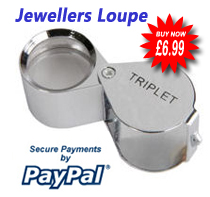If you enjoy antiques and like watching TV programmes such as Bargain Hunt and Antiques Road Trip, you might have noticed that the experts often talk about Pewter and Britannia Metal.
But what actually is it and where does it come from?
But what actually is it and where does it come from?
Pewter is a metal alloy. It is made predominantly from tin (between 85% - 99%) and a mix of other metals including antimony, bismuth copper and lead.
Pewter has been used since the Bronze Age and is extremely workable. Pewter religious objects were very common in churches from the Middle Ages. Pewter was also the main type of tableware until porcelain became more common and a popular material for candlesticks, tankards, platters, plates and similar objects.
It is generally regarded as having it’s heyday in the 17th Century and pewter dating from this time and earlier can be very valuable and collectable.
Pewter has been used since the Bronze Age and is extremely workable. Pewter religious objects were very common in churches from the Middle Ages. Pewter was also the main type of tableware until porcelain became more common and a popular material for candlesticks, tankards, platters, plates and similar objects.
It is generally regarded as having it’s heyday in the 17th Century and pewter dating from this time and earlier can be very valuable and collectable.
However, pewter
remains popular today, especially for commemorative items and you can
still find new pewter tankards and ornaments on sale.
British and Irish pewter generally carries marks, which can be used to identify the maker and date of manufacture. There are six types of pewter marks that you can use to help identify pewter but it is an imprecise science.
1.
A quality mark such as a rose, crown or X . These marks were not
applied after the 1700s. Later quality marks may include slogans such as
made in London.
2. Initials or names and a date – known as a touch mark.
3.
Hallmarks similar to silver hallmarks, which usually contain pictures.
Make sure you do not mistake your pewter piece for solid silver!
4.
If there are any words or measurements on the pewter it is considered a
makers mark and may help you identify the age of the pewter by the
lettering style.
5. You may find a maker’s name or address somewhere on the pewter which is known as a pot touch mark.
6.
If you find initials displayed in a triangular shape it is a mark of
ownership which has been applied by the owner of the pewter.
In general, the large letter refers to the initial of the surname and the smaller letters refer to the initials of the husband and wife. This type of marking often denotes that the pewter dates from the 18th century.

Britannia Metal
In general, the large letter refers to the initial of the surname and the smaller letters refer to the initials of the husband and wife. This type of marking often denotes that the pewter dates from the 18th century.

Britannia Metal
Britannia
Metal is technically a form of pewter but does not contain lead. It was
favoured because of its white appearance and was first known as white
metal. Britannia Metal contains antimony tin and copper and it was first
used commercially by Sheffield manufacturers from around 1769.
Britannia metal can look very similar to silver, especially when it is highly polished so make sure you check the hallmark first. Britannia Metal can also look very similar in appearance to pewter, especially if it has dulled in colour. It was used for a variety of purposes such as tea services , and can be seen as having its heyday in the 19th century.
Britannia metal is often used as a base metal for electro plating silver objects and is marked on British hallmarks as EPBM – Electroplated Britannia Metal.


Subscribe to this site by email



















